Suunto Vertical review: a watch for the adventurous
Suunto’s best sports watch in a long time, but there’s still work to be done
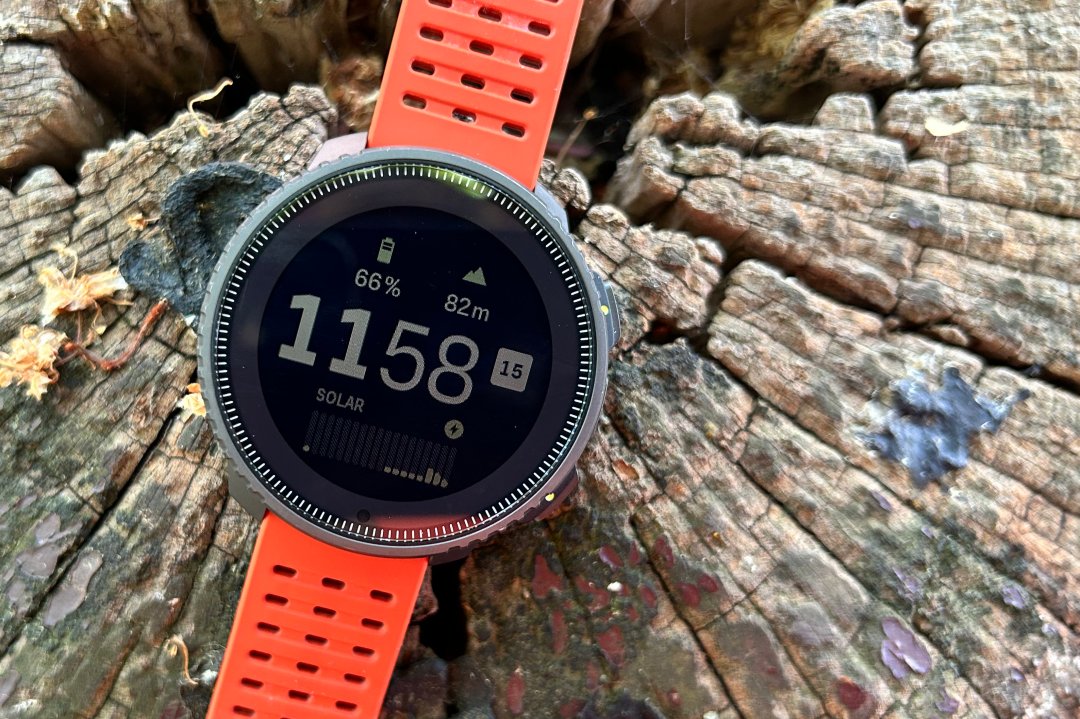
The Suunto Vertical is a watch that Suunto calls an adventure watch. So it’s going up against other best GPS watches like the Garmin Fenix 7 and the Apple Watch Ultra, promising big outdoor tracking smarts for hikes, swims, treks and more.
For the Vertical, Suunto is introducing offline mapping, solar charging and the on-trend dual-band GPS support along with an absolute bucketload of tracking modes and stats to join you on those adventures.
Pricing starts at $629/£545 with the titanium solar version we tested seeing that jump to $839/£745, putting it squarely in Apple Watch Ultra and Fenix 7 Pro pricing territory. So does the Suunto Vertical impress? Here’s our take.
Design and screen
The Vertical is a new line for Suunto, sitting above its Peak, Baro and Core watches and definitely takes design cues from its newer Peak watches to create something that’s pretty sleek and undeniably well built.
It’s packing a 49mm case that measures 13.6mm thick, so it’s slimmer than the Apple Watch Ultra and the Fenix 7 in comparison. You can also pick it up with either a stainless steel bezel or a titanium one like the one we tested. That gives you some metal to go with the polymer case with the titanium option weighing in lighter than the stainless steel Vertical, but that also pushes the price up considerably.
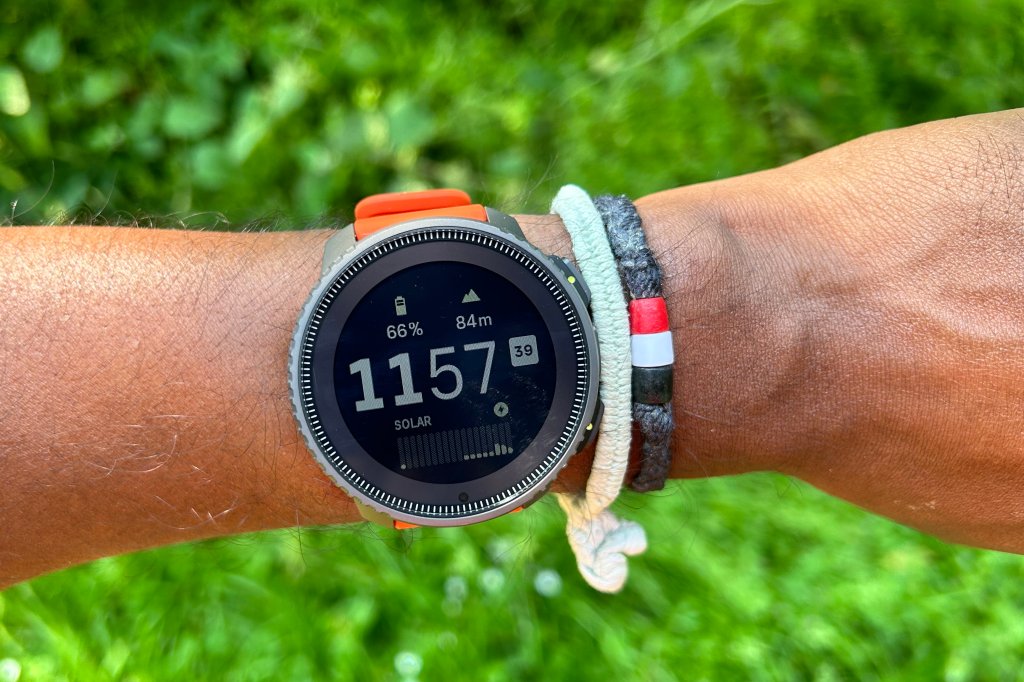
Front and centre is a 1.4-inch, 280 x 280 matrix touchscreen display, so you’re getting a bigger and high resolution screen than the one included on the Suunto 9 Peak and Peak Pro. It certainly doesn’t rival the AMOLED and OLED displays you’ll get on the Apple Watch Ultra and Garmin’s Epix watches, but it’s a screen that offers strong viewing angles in bright outdoor light and is easily viewable in clearer pool water too. Surrounding that display is a solar charging ring, which is only available on the titanium model and promises 30+ more battery than the non-solar Vertical.
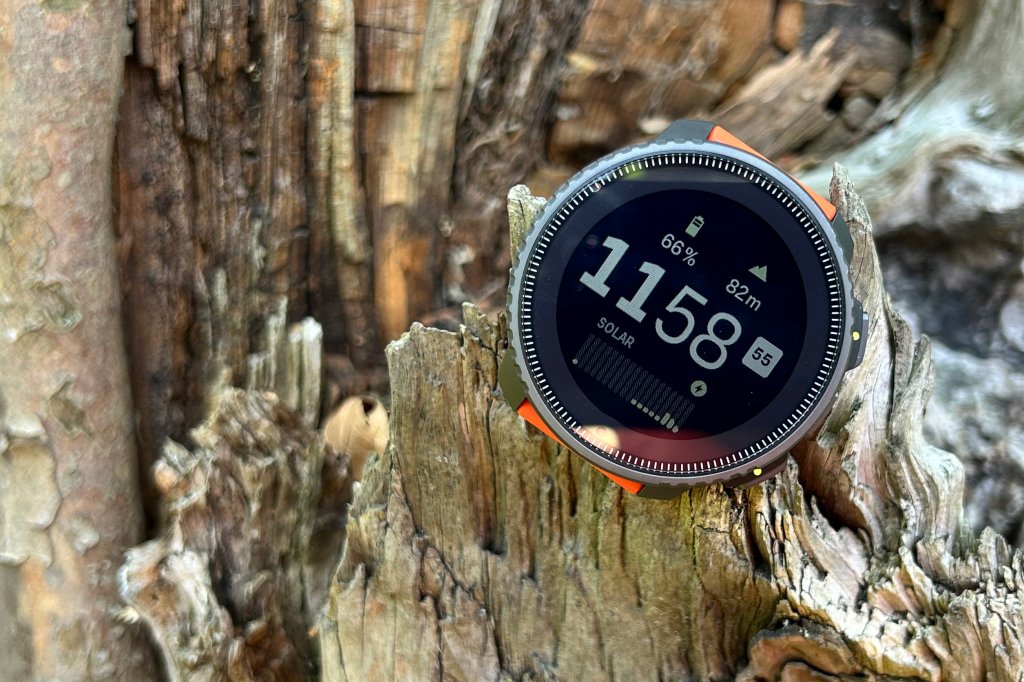
Alongside that display are three big, flat buttons to help you navigate through menu screens and can feel a bit stiff to press and respond to actions on screen. Around the back is the optical sensor to take care of heart rate and blood oxygen tracking, while the 22mm silicone strap that the case is partnered up with is easily removed if you need to swap in a new band.
As a package you’re getting something that can be submerged in water up to 100 metres depth, so if you want to swim with it indoors or open water, you’re pretty well covered on that front.
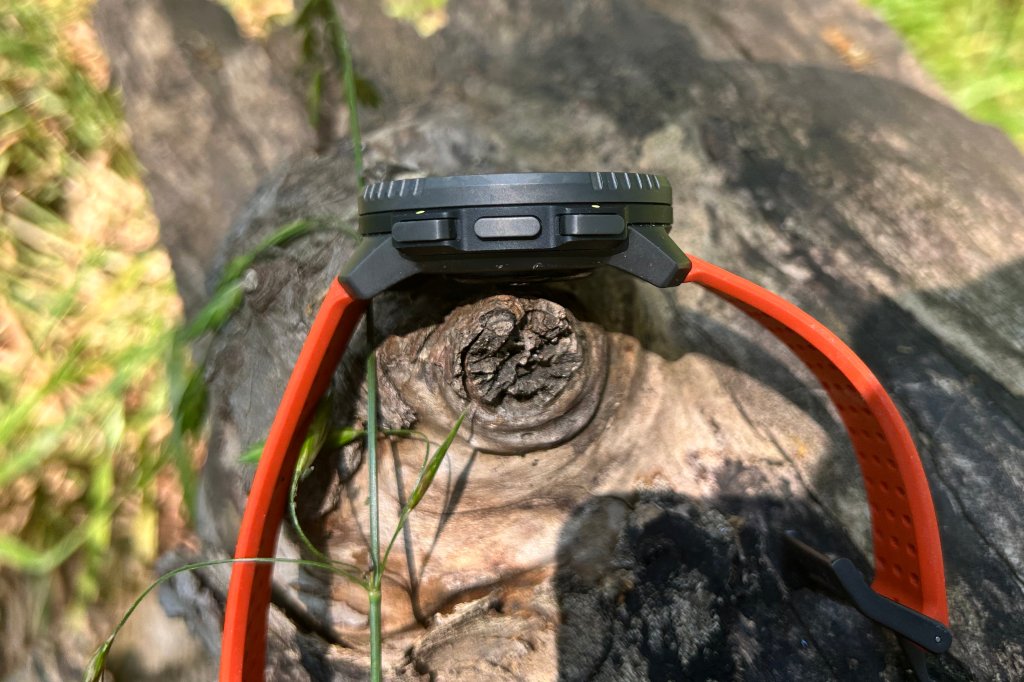
Performance
Like most of Suunto’s watches, the Vertical is aimed at outdoor lovers. So if you spend more of your time hiking, trail running and mountain biking, this watch has a tracking mode for you. It’ll cover monitoring activities like indoor rowing and circuit training as well, but you’ll get the most out of it when you head outside.
On that front, there’s some pretty big features here that while not new to sports watches in general, are new to Suunto’s watches. The first is dual-band GPS/GNSS, which allows you to communicate to the five major satellite systems over multiple frequencies to improve tracking accuracy in environments that have tall buildings or is a tall wooded area, which can impact on positioning accuracy. We tested the Vertical’s dual-band powers against Garmin’s similar multi-frequency positioning mode on the Forerunner 965 and the Epix Gen 2 Pro to see how it fared on the accuracy front. After a slightly sketchy-looking initial run, the Vertical performed well on both the mapped route and metrics front. Performance metrics like distance, pace and average pace looked good, though ascent data in general seemed to post higher on the Vertical in comparison.
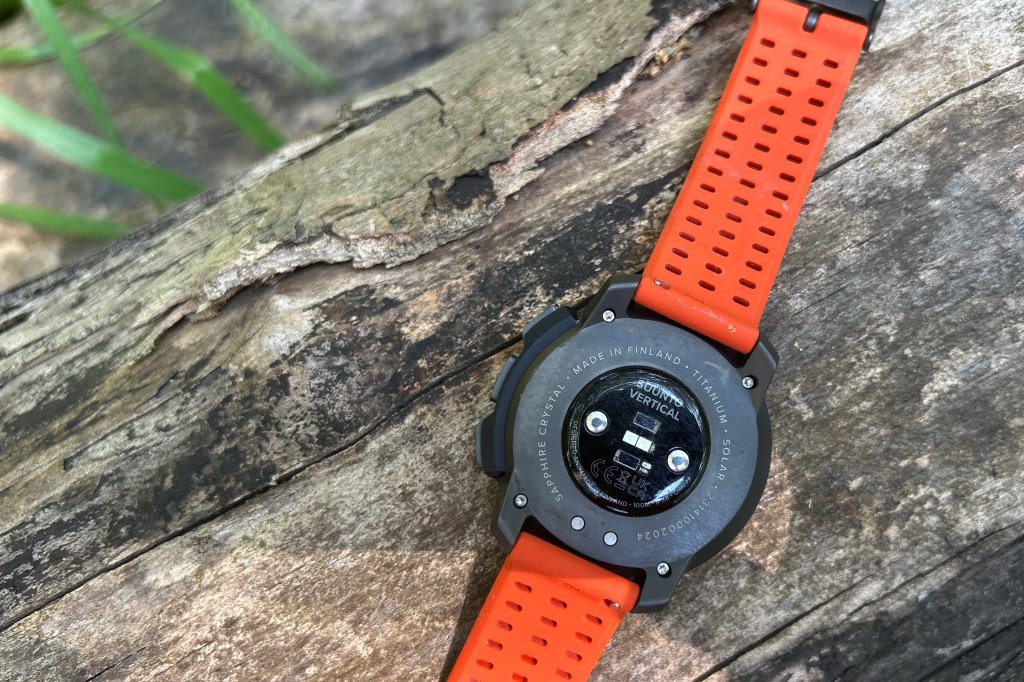
For heart rate data, it performed pretty good on steady-paced workouts against a Garmin HRM-Pro Plus chest strap, though on some more intense use, there were some unsurprisingly odd high maximum heart rate spikes. Fortunately, you do have the ability to pair external heart rate monitor straps. It was a similarly solid tracking performance for activities like hiking, pool swimming and indoor workouts like rowing, so the sports tracking in general gets a thumbs up.
The other big headline feature here is the ability to view maps offline on the watch where typically on Suunto’s watches you had to use its companion phone app for a richer mapping experience. Now you can download maps by region by downloading them through the phone app and then syncing over to the watch. It’s a pretty seamless process and does require dropping the watch on the charger and pairing it to Wi-Fi to make those apps available. On the watch, you can view maps on a dedicated screen or as an additional screen during workout tracking.
There’s outdoor, dark and high contrast map display types and while not as richly detailed as the mapping support on Garmin’s watches, it can clearly help you distinguish contour lines, water and other key elements of your territory making it ideal for outdoor use. You can use the touchscreen to scroll through the map and the physical buttons to zoom in and out. If you want to use turn-by-turn navigation with mapping you need to enable that when creating routes in the Suunto companion app.
All in all though, the improved mapping and tracking accuracy works well on the whole on the Vertical, plus you have all the good stuff Suunto typically serves up here, like environmental data, training and recovery insights and support for third party apps including Strava, TrainingPeaks and Komoot.
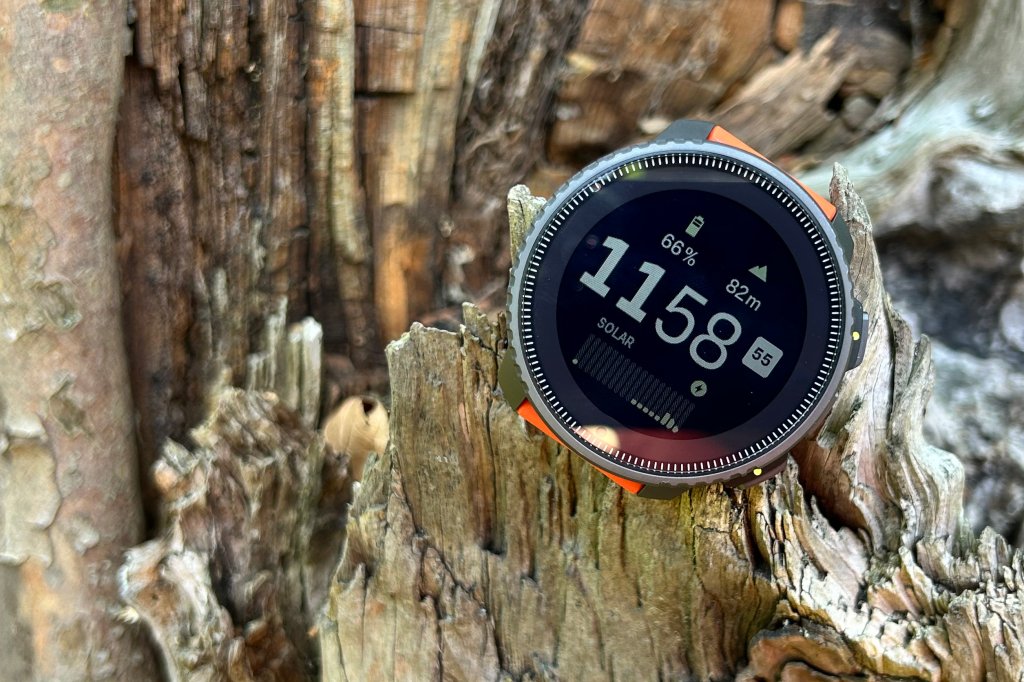
Features and battery life
Outside adventuring with the Vertical you can use it like a fitness tracker and it’ll act like a smartwatch. How well it does those things is certainly up for debate.
It’ll track steps, calories burned, continuous heart rate data and how active you’ve been during the day. Step counts were generally higher than tracking on a Garmin and the Oura Ring. Continuous heart rate felt more reliable though and it was a similar story for sleep tracking, Particularly for capturing sleep duration and time fallen asleep. The presentation of that tracking data isn’t all that engaging on or off the watch though.
As a smartwatch the Vertical still has some work to do. You can view notifications, control music playback on your phone and change watch faces and while features work as expected, the basic nature of the way they’re displayed and some noticeable sluggishness in the software means it’s far from a slick experience and can’t match the sleeker smartwatch support on Apple and Garmin’s outdoor watches.
Then there’s battery life, which is something Suunto likes to typically make a big noise about. Suunto says the Vertical can go for up to 60 days, but that’s in a basic watch mode. That drops to 30 days when you’re using the activity tracking features and displaying smartphone notifications. Then you get into the nitty gritty of battery life during tracking and they sound impressive. For the titanium solar Vertical we tested, you can expect to get anywhere from 85 hours to all the way up to 30 days depending on the GPS mode you’re using.
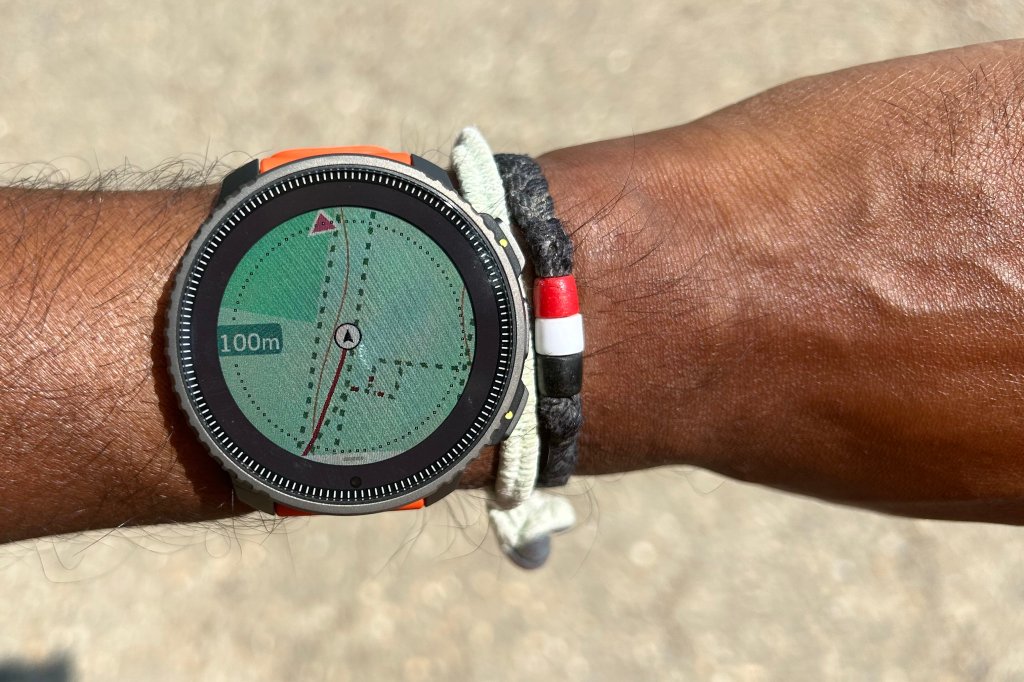
We used the Vertical for one week with all features in use including the onboard blood oxygen tracking and it lasted less than a week. We turned off the power-sapping blood oxygen tracking and there was still a peculiar drain with the battery again lasting a week. Suunto then displayed a message in the companion app to say that having the backlight turned on sees a big drain on battery and turning that off seemed to help push things further.
In tracking mode, over an hour of outdoor tracking in the best GPS mode saw the battery drop by just 2%, which suggests this is a watch that can live up to its big GPS battery billing, even in its optimal GPS mode. Play around with the settings and it’s clear you can match that GPS battery performance day-to-day as well.
In terms of those extra battery benefits from the solar charging support, it’s a similar story to Garmin’s solar charging, where you’ll need to be exposed to sunny conditions on a regular basis to really see the benefits of it long-term.
Suunto Vertical verdict
The Suunto Vertical feels like it’s on the right track again in terms of making a sports watch that feels like it can live with the Garmins, Polars and Coros watches of this world. You can also stick the Apple Watch Ultra in that list as well. Adding features like mapping support, dual-band GPS to go with Suunto’s typically great battery during tracking and rich outdoor data and there’s plenty to like here. If Suunto can get the on-watch software experience up to scratch, it might finally have a watch to compete with the best.
Stuff Says…
The Suunto Vertical is the best sports watch Suunto has made in ages, but it still needs to raise its software game both in presentation and performance to better the similarly priced competition.
Good Stuff
Welcome addition of TOPO maps
Good GPS performance
Strong battery in tracking mode
Bad Stuff
Watch software can be laggy
Heart rate tracking at intensity is iffy
Not a very slick smartwatch
Suunto Vertical tech specs
| Works with | Android and iOS |
| Weight | 74g |
| Water resistance | 100m |
| Display | 1.4-inch, 280 x 280 matrix |
| Battery life | Up to 30 days in smartwatch mode |
| Location services | GPS, GLONASS, GALILEO, QZSS, BEIDOU Dual Band GPS/GNSS |



